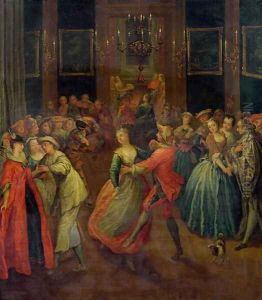Henri J. van Blarenberghe Paintings
Henri Joseph van Blarenberghe was a French painter and draftsman who was born on September 24, 1741, in Lille, France. He hailed from an artistically talented family, with his father Louis-Nicolas van Blarenberghe and brother Louis-Nicolas van Blarenberghe also being recognized painters of their time. The van Blarenberghe family specialized in detailed miniature paintings, often depicting landscapes, battles, and genre scenes. Their works were highly prized for their intricacy and attention to detail.
Henri J. van Blarenberghe was best known for his miniature paintings on ivory and snuffbox decorations. His career flourished during the 18th century, a period in which miniature painting was highly fashionable among the European aristocracy. He was trained by his father and they often worked together, sometimes collaborating on the same pieces. This close working relationship makes it challenging at times to distinguish between the individual contributions of father and son in certain works.
During the French Revolution, the van Blarenberghe family's aristocratic clientele was dispersed and their traditional way of life disrupted. Despite these turbulent times, Henri managed to continue his work, although the demand for luxury items like miniature paintings diminished. He adapted by also producing larger works and accepting commissions that reflected the changing political landscape.
Henri J. van Blarenberghe's works are characterized by their vivid detail and the liveliness of the scenes he depicted. He had a keen eye for capturing the nuances of everyday life as well as the grandeur of ceremonial events. His battle scenes, in particular, are noted for their dynamic compositions and accurate portrayal of military attire and tactics.
Henri J. van Blarenberghe passed away on December 1, 1826, in Fontainebleau, France. His legacy continues through his artworks, which are preserved in private collections and museums around the world, including the Musée du Louvre in Paris and the Metropolitan Museum of Art in New York. His contribution to the genre of miniature painting remains significant, and his works are still admired for their beauty and historical significance.
